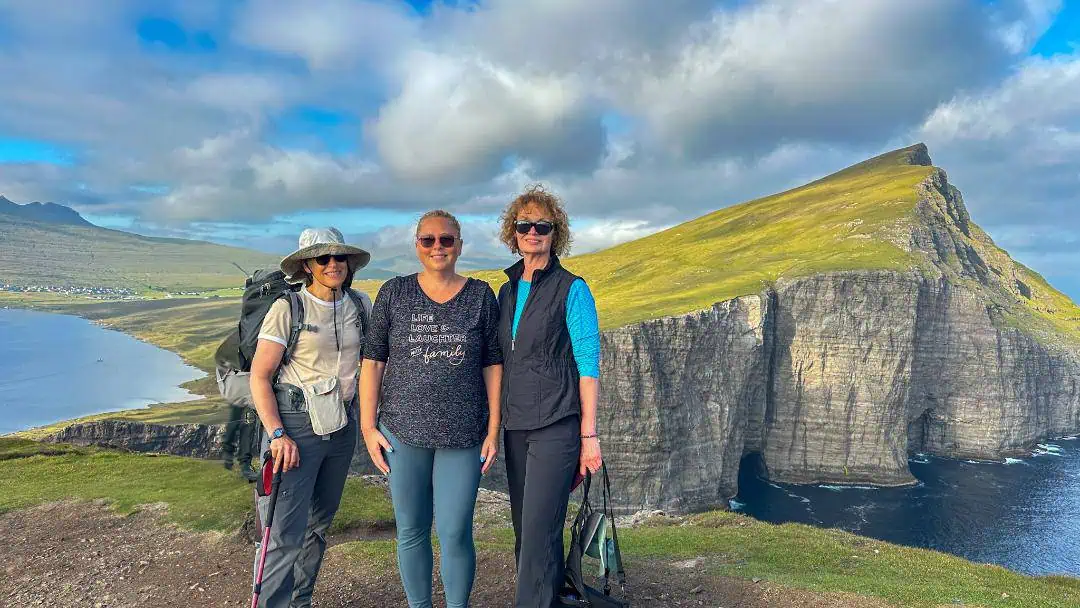
Why Travel to the Faroe Islands?
My friends and I fell in love with Iceland’s unique landscapes, active adventures, and relative lack of tourists at the time (but certainly not now). For this trip, we wanted a similar but unique adventure. Like Iceland, the Faroes are born from volcanic action, but unlike Iceland, the volcanoes in the Faroes are no longer active.
The Faroe Islands also offer many hiking and animal adventures and are easy to explore by car. I saw pictures of its waterfalls, sea stacks, and green cliffs and knew this was where I wanted to celebrate.
Where are the Faroe Islands?
The Faroe Islands lie between Iceland and Denmark in the middle of the Atlantic.
The country is under Denmark’s external sovereignty but has its own unique government, language, culture, and money.
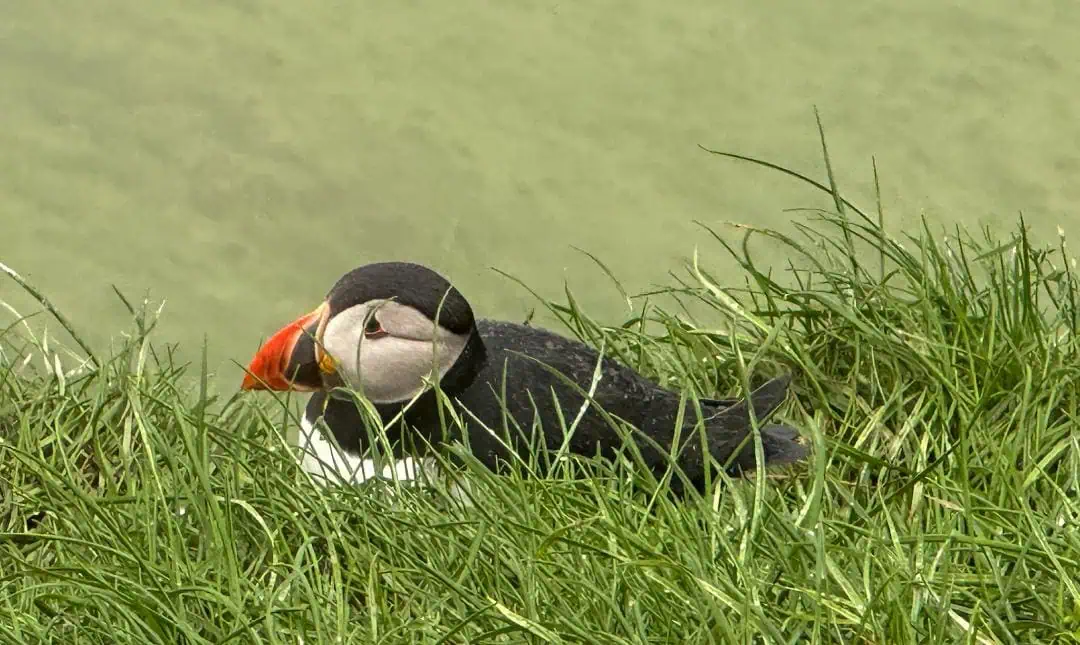
When to Visit the Faroe Islands
Part of my attraction to the Faroe Islands is the large number of puffins. Puffins live on the ocean most of the year but come to cliffs to breed. July is baby season, so we came to see when most puffins were hanging out on the cliffs as the parents were actively feeding their pufflings. Pufflings only leave their nests on the day they fly away to start their oceanic adventures.
Like Iceland, the weather in the Faroes never gets very warm. A lovely day is sunny in the high 60s, but you must visit in the summer to get this.
How to Get to the Faroe Islands
The majority of flights to the Faroe Islands depart from Denmark and Iceland. Atlantic Airways has infrequent flights from New York City.
There are also ferries that travel from Iceland and Denmark to the Faroe Islands.
How Long to Spend in the Faroe Islands
It takes a while to get to the Faroe Islands from the US, and we wanted to be sure to see everything we wanted to experience there.
We stayed for eight days in the Faroe Islands. This was a reasonable amount of time, as many days were rainy, and this timeframe gave us flexibility. On the other hand, the landscapes are all quite similar. Each village has grass-covered houses, sheep and grass-covered hills, and a coffee waffle house. If I did the trip again, I would stay for one week.
Driving in the Faroe Islands
Driving in the Faroe Islands is pretty simple if you are used to driving on the right side of the road. The roads are well-marked and smooth, and the street directions are generally obvious.
Large tunnels connect the islands and are generally two-laned. There are a few one-way tunnels like the one to Gásadalur, but even that was simpler than I expected. There are a lot of rotaries, so make sure you understand how to use them before you visit.
The Faroe Islands are smaller than the smallest US state, Rhode Island, so they are a great place to settle in one or two locations and take day trips.
Faroe Islands Itinerary
Most of our days in the Faroes included at least one long hike. For this reason, you may want to split some days up. I planned our days based on how close things were to each other.
Day One- Múlafossur, Gásadalur and Lake Sørvágsvatn (or Lake Leitisvatn)
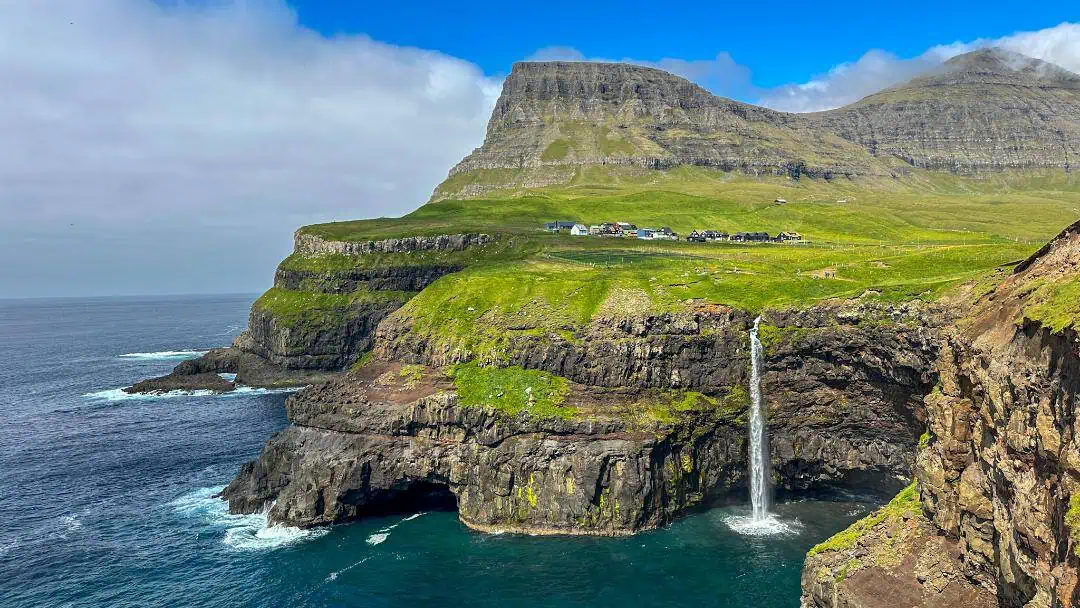
When you see pictures of the Faroe Islands, you most likely see these two attractions. I will write a whole post about this day, so subscribe (in the sidebar>>>) to hear about it when I do.
These attractions are close to the airport, so I recommend visiting them when you fly in or out. Even better, do one on each day.
Múlafossur in the village of Gásadalur
Fossur means waterfall in Faroese, so Mulafossur is a waterfall that is a short free walk from the charming village of Gásadalur. Read about how to best enjoy Gásadalur.
Lake Sørvágsvatn
This lake is beautiful and calm and appears to be floating above the ocean. You must take a substantial hike (paid) up a grassy mountain to see that.
You can have dinner that night at Restaurant Fiskastykkio on Vagar. However, unlike in southern Europe, restaurants on the Faroe Islands close very early.
That night, we drove to the Gjaargardur Guesthouse in Gjógv. Thank God for the long daylight hours, as the drive to Gjógv is a little sketchy, with ditches on both sides of the road. It was the only road in the Faroes that made me feel that way.
Although we headed to Gjógv, I recommend heading first to Tórshavn, the capital city of the Faroe Islands. I am recommending this for two reasons. The primary reason is to visit the Tjóðsavnið, or Faroe National Museum, at the beginning of your trip. The second is to end your trip in such a magical place as Gjógv.
Day 2 in the Faroe Islands, Tórshavn
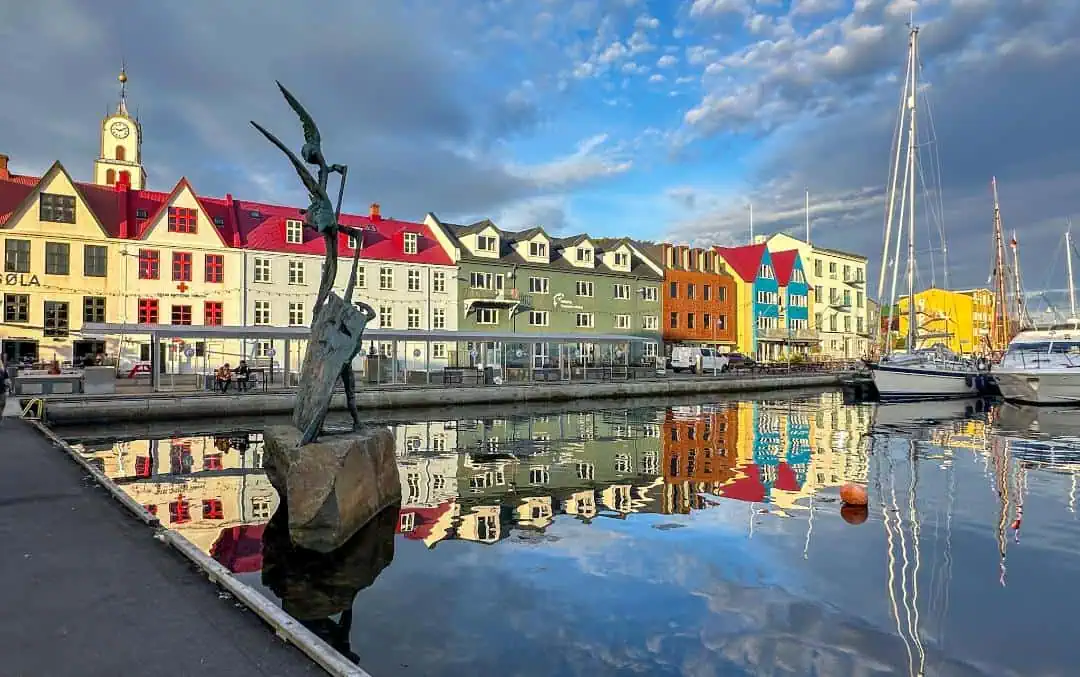
Spend the first half of your day at Tjóðsavnið. The ticket includes entrance into the main museum, which covers the country’s culture and natural history, an old farmhouse, and a whaling museum. I recommended this at the beginning of your visit because this museum answered many questions I had been pondering our whole trip.
Alternatively, save this visit for the first rained-out day, which you will likely have many of. Speaking of this, pack your waterproof rain pants and lightweight rain jacket for this trip.
You can spend your afternoon exploring the rest of Tórshavn, particularly the waterfront, fort, and the Tinganes, the oldest part of town with buildings from the age of the Vikings and which now houses the government.
We had some excellent meals in Tórshavn, all of which required reservations. I recommend going to Katrina Christensen, Barbara, and The Tarv. We also went to the Michelin-starred Roks, which was one of the ladies’ favorite meals, but I wasn’t as impressed considering the steep price.
Another meal I would highly recommend is a meal in a Faroese house. We had a fabulous experience with Sabina at Fjordcottage. First, she explained all about the dress and culture of the Faroes at her home on Eysturoy. Then we enjoyed every culturally Faroish food and drink you can imagine. Her email is [email protected] so that you can book the experience yourself.
Day 3 Faroe Islands: Mykines
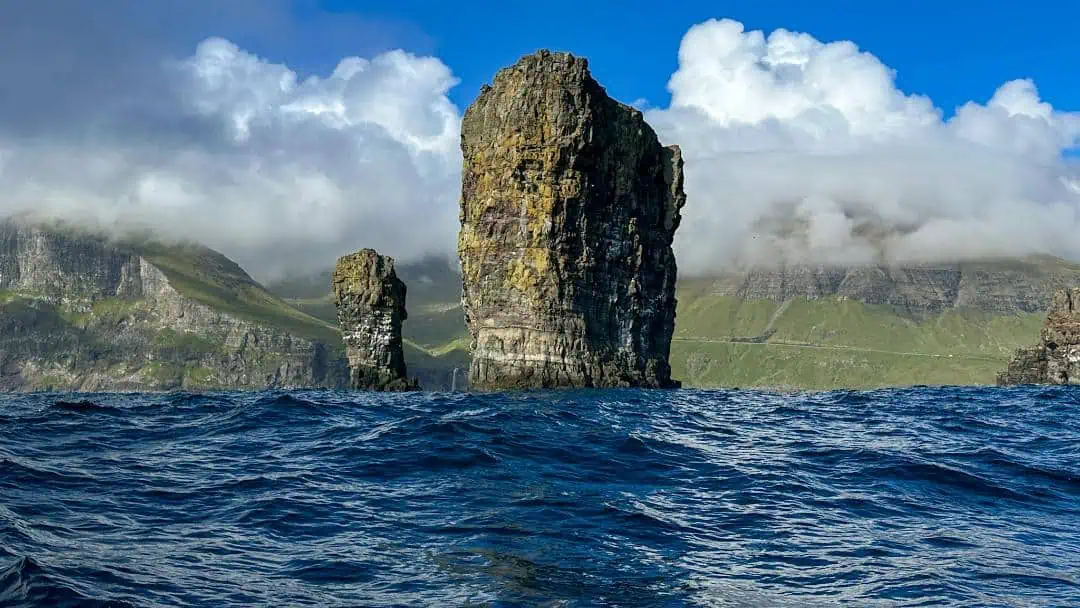
For a big reason, this day must be planned early in your trip. The cheapest way to Mykines is by ferry. Not only does the ferry sell out up to six months in advance, but it also gets canceled 30% of the time in the summer due to weather. You will understand why when you take this trip and see the only harbor on the Mykines. You can book your ferry here. The ferry leaves from Sørvágur on the island of Vagar.
This island ends in cliffs, making it the perfect spot for birds to nest in. People flock (pun intended) to get up close and personal with more puffins than you can imagine. If you are a birder, the island also has other unique species.
You also must pay for a guided hike on this island. Upon departing the ferry, you will be led to the schoolhouses for an introduction to the island. The guide will then show you around the village. Our guide was just one of a few kids who grew up on the island. The year-round population is only around 20 people. Due to its small size and difficulty to access, after 6th grade, he lived off-island to continue school.
The hike itself goes up a steep mountain. Many people were very out of breath, and one person decided she couldn’t do it. Once on the top of the mountain, you will be surrounded by puffins! The trail to the lighthouse is currently inaccessible, but there is a ridge hike that you can choose to take with the guide if you like. The guided hike experience will take around 3 hours.
Other than a cafe, there is nothing much else that is easy to do on Mykines, so plan a half-day to spend here.
The place where you park for the ferry is also where boat trips leave to see the fascinating rock formations of Drangarnir. Book your boat tour to see Mulafossur, Drangarnir, and more!
Day 4 Faroe Islands- Kalsoy and Hot Tubs
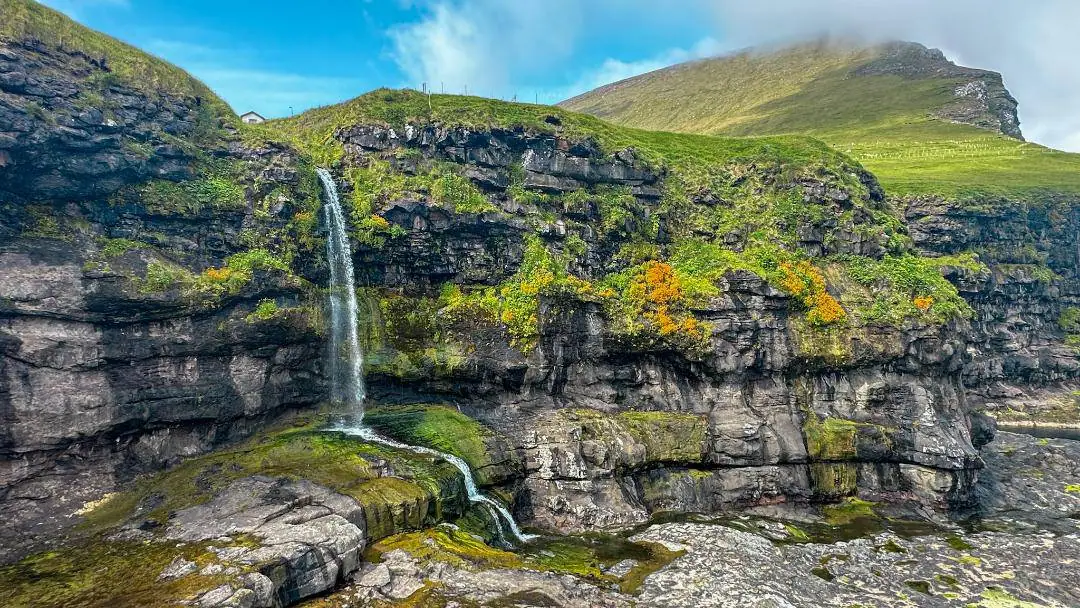
Kalsoy is another beautifully hilly, sheep-covered island with a hike to a lighthouse. I will write about our day in Kalsoy soon.
After Kalsoy, stop by the public pools and saunas in Klaksvík (Klaksvíkar svimjiholl).
Day 5 Faroe Islands- A farm tour and hike southern Eysturoy and a quick visit to Nolsoy
We spent this day at a sheep farm, Hanusarstova. For a fee, Harriet opens her house and farm, which overlooks the water, to visitors. The farm is in the small town of Æðuvík, on Eysturoy.
We met her sheep, Faroese horses, chickens, Faroes border collies, and ducks. Luckily, it was the shearing season when we were there, so we helped shear a sheep and bottle-fed some lambs.
She then treated us to coffee, delicious cake (of course, one of which contained rhubarb), and stories of being a farming family in the Faroe Islands. We loved everything about this activity and learned a lot!
After that, we explored more of this area with small hikes around Lake Toftavatn and Nes Vindmøllepark, a windmill-covered hillside with views of Tórshavn.
That evening, we visited Nolsoy Island, just a short ferry ride from Tórshavn.
We found the people in Nolsoy very friendly. We had dinner at the famous bar Maggie’s, which often has live music. We had dessert at the town’s coffee shop, which is on the water and is also the island’s tourist office. There, we had a thought-provoking discussion about the government with a member of the country’s parliament.
Day 6 Faroe Islands- Saksun and Tjørnuvik
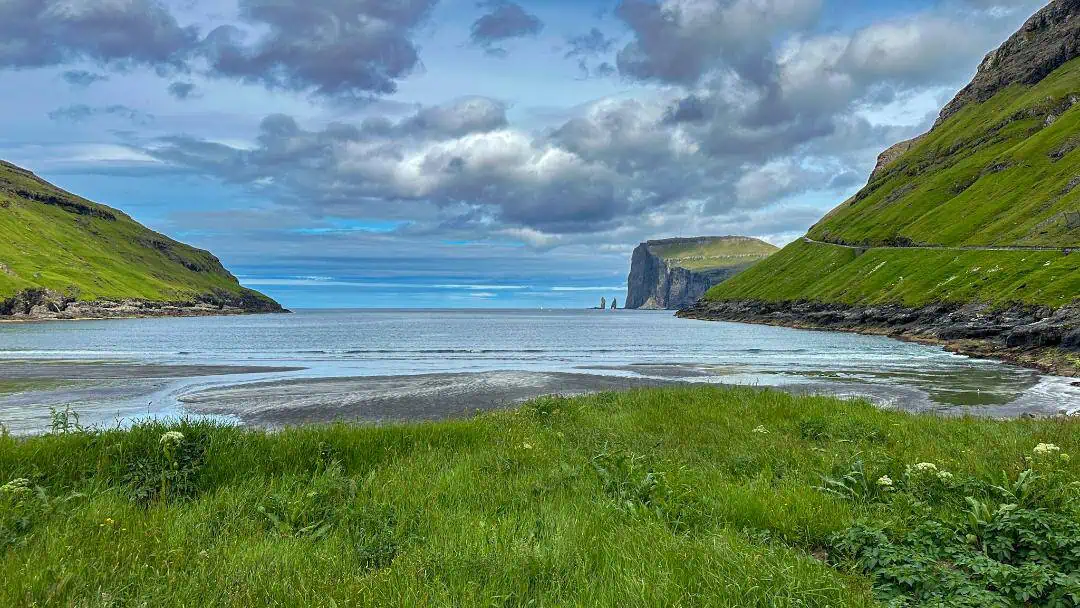
Later, I will write about my day in these two small but unique villages.
And finally, spend your last days relaxing in a village with gorgeous hikes and views.
Day 7 Faroe Islands- Gjógv
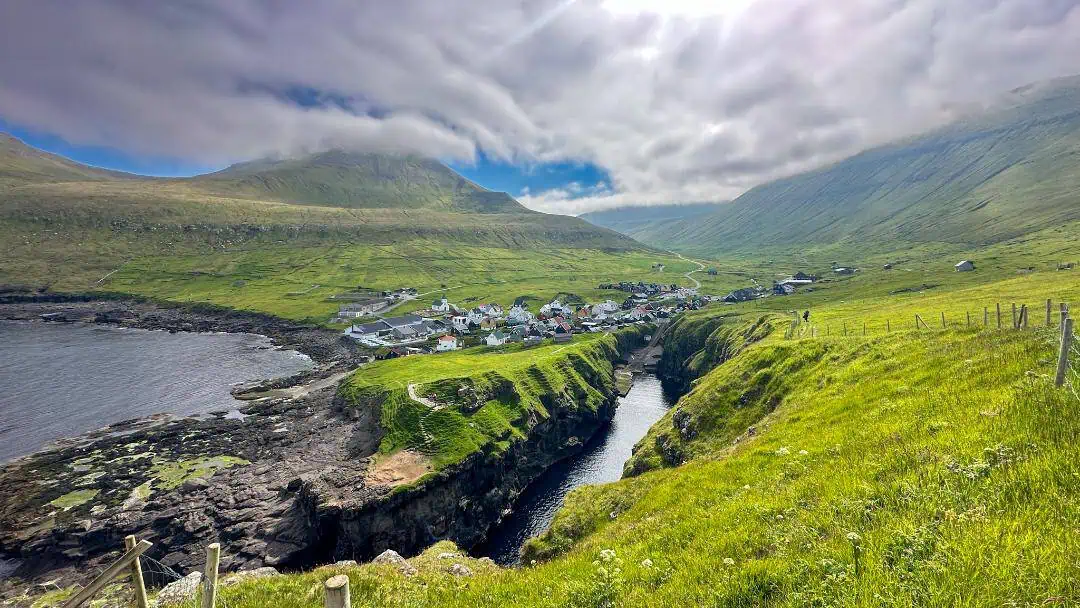
Gjógv means gorge in Faroese, which goes through the small town, which is tucked between mountains. It was my favorite village that we visited in the Faroe Islands. It has cliffs with puffins and great hikes, and I will also write a separate post about my time here.
Money in the Faroe Islands
During my visit to the Faroe Islands, I only needed cash once, and she accepted US dollars. The Faroe Islands use Faroese króna, which is very hard to convert in the United States. It is equivalent to Danish Krones. Credit cards are widely accepted, even in the smallest towns. I recommend only exchanging a small amount of money.
The Faroe Islands are truly as beautiful and untouched as the pictures portray and an easy and replenishing place to visit. Although the islands offer enough stunning views and hikes for a more extended visit, we felt that we got a decent slice of the Faroese way of life, and the trip was a success for us all.
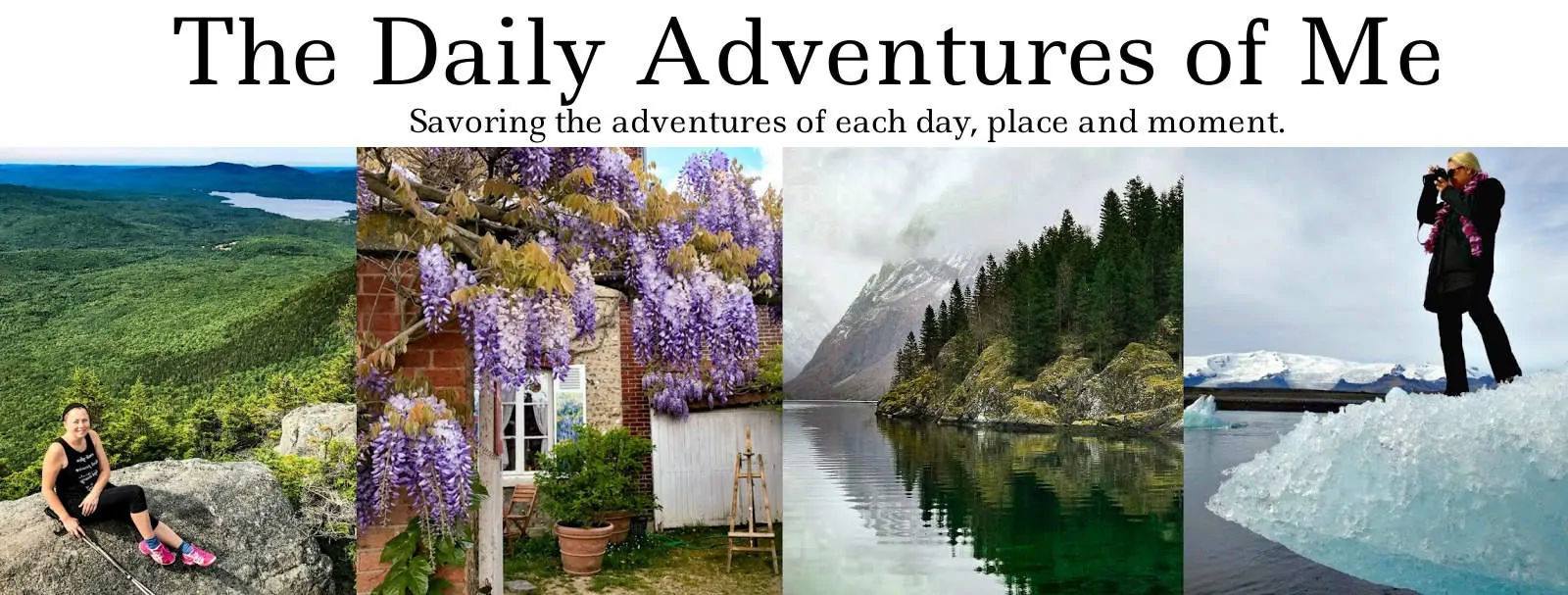
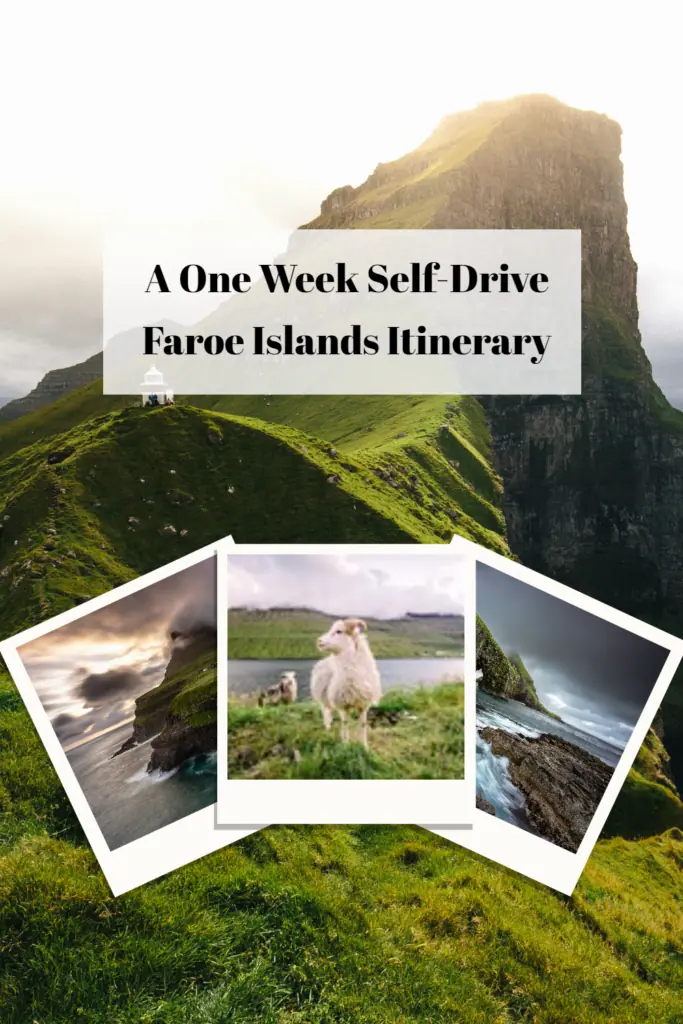
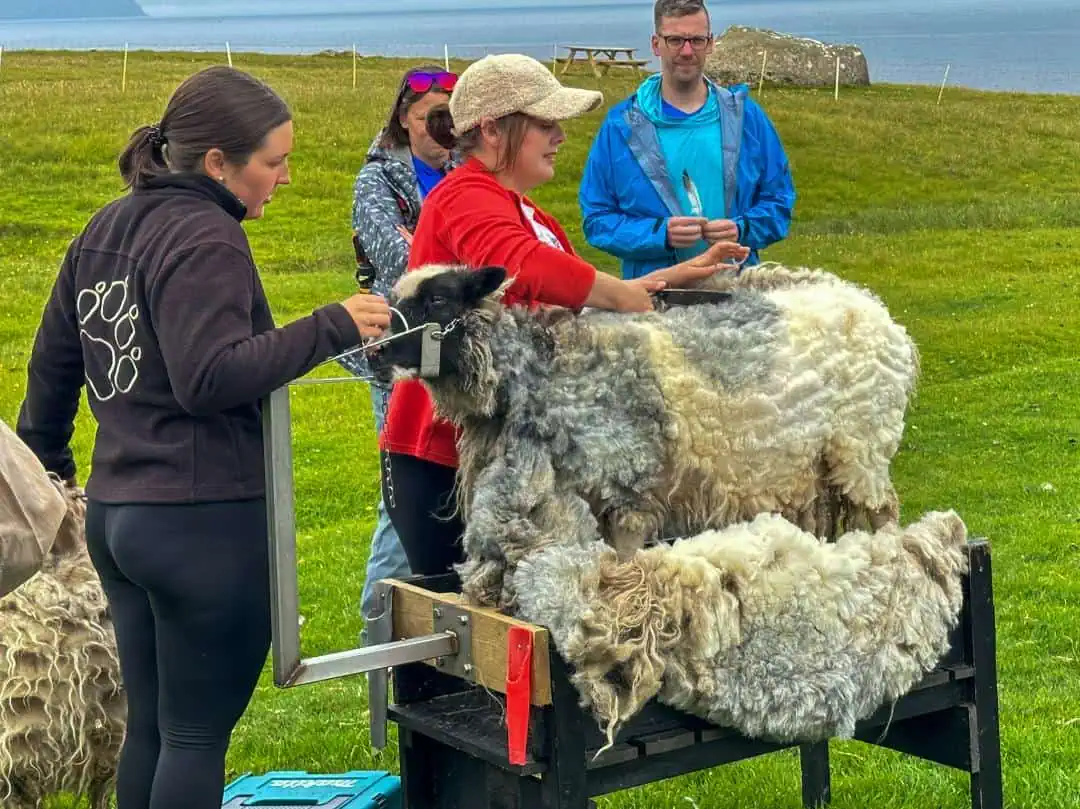
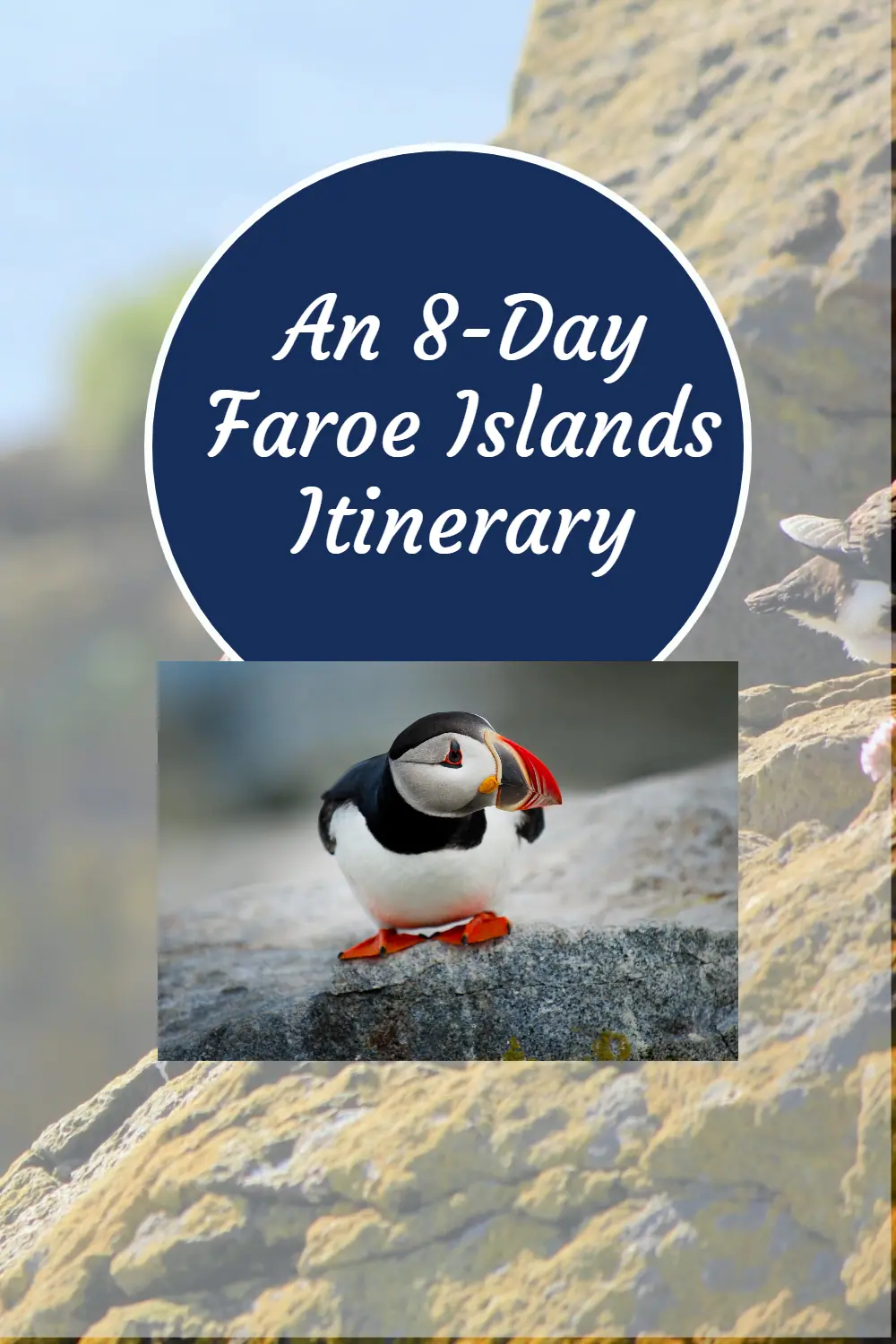
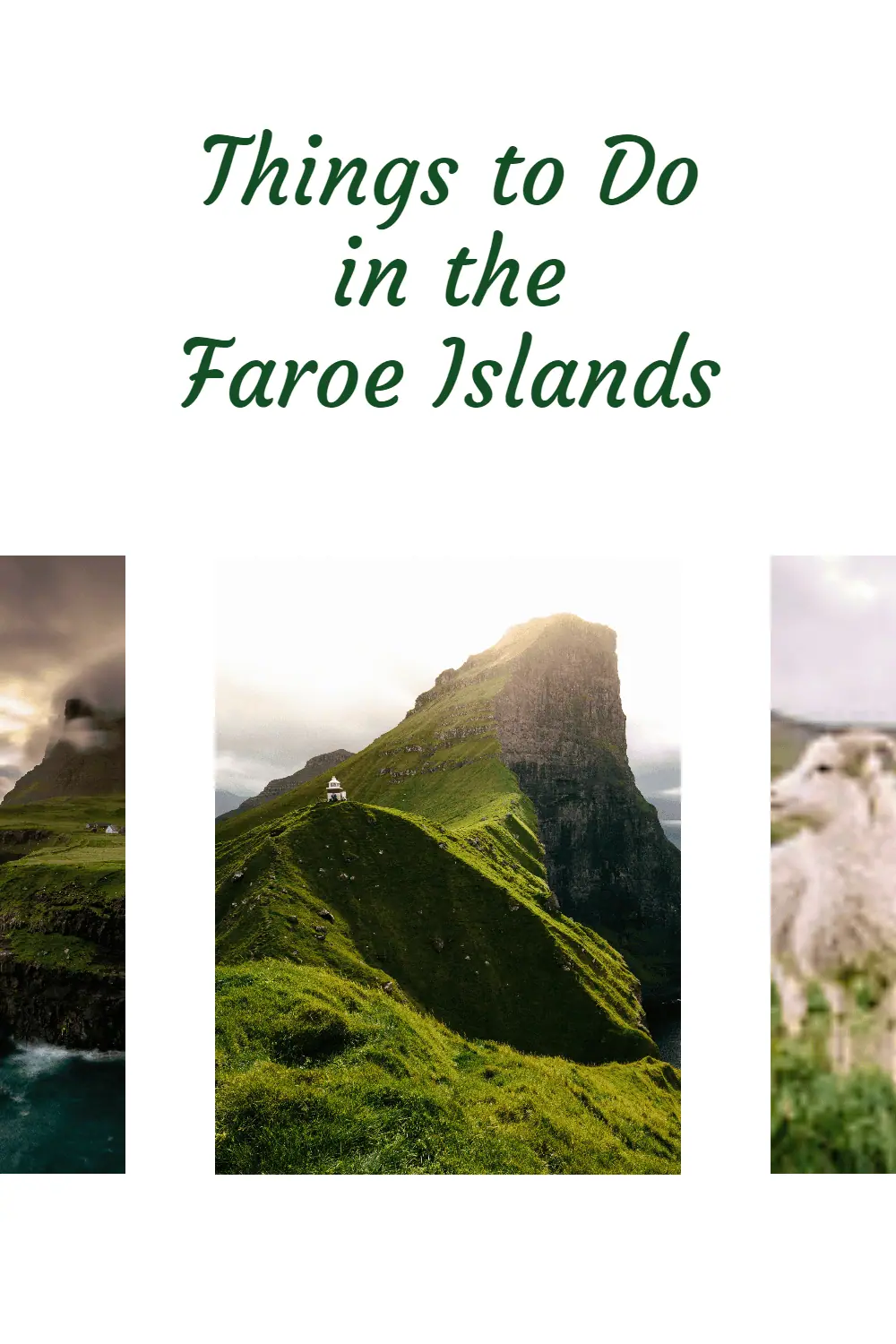
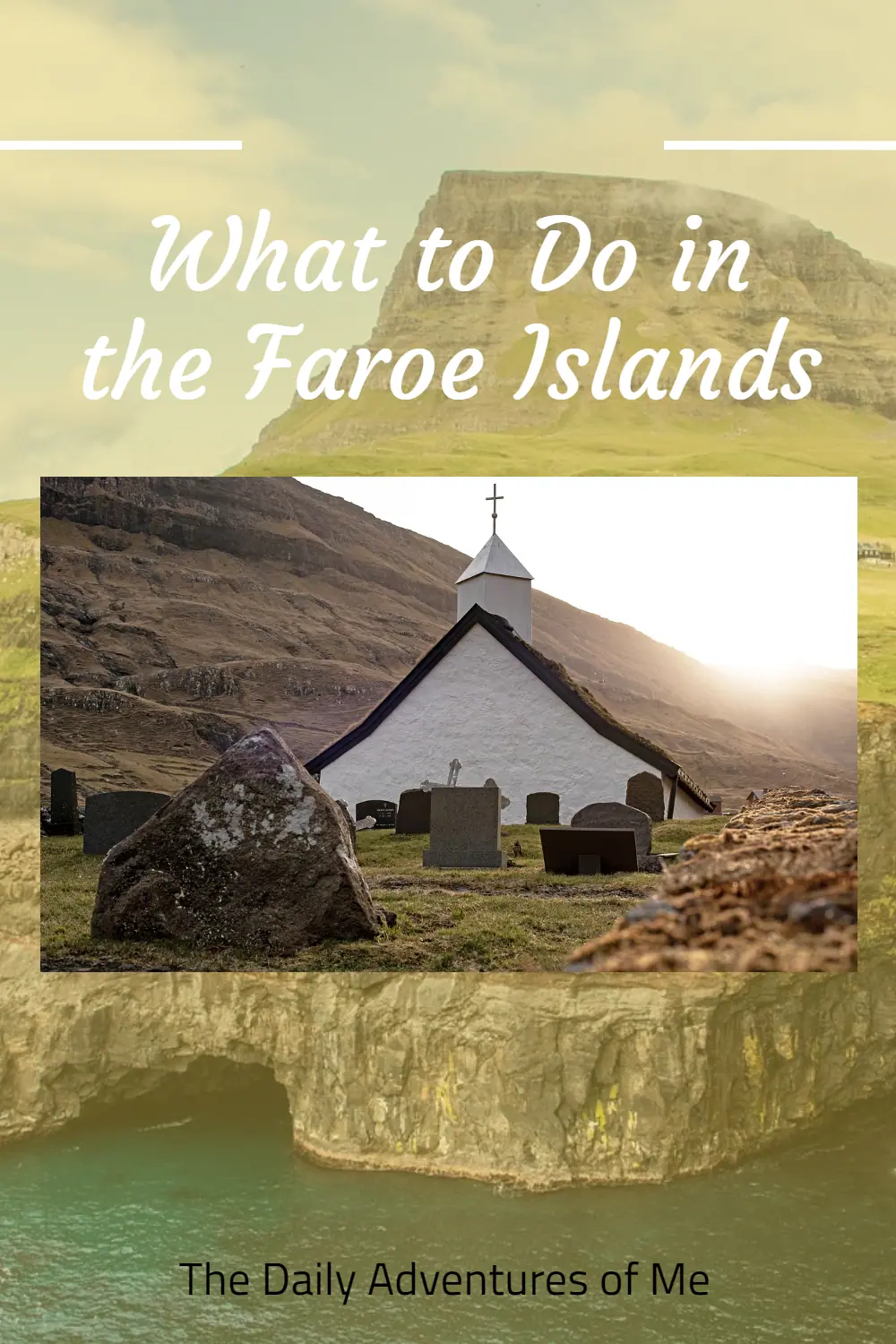
Hi, I am looking to coming to the Faroe Islands and was wondering what it cost you for the eight days, including accommodation, food, fuel, car hire, tolls, ferries, and hiking fees. sightseeing boat trips.. What sort of accommodation did you stay in also did you use a guide if so, can you recommend the same guide
Kind regards Wendy Klein
We didn’t use a guide. It is very easy to plan yourself. I think the price with airfare was around $4000 a person. Have an excellent trip!
All my hotels are listed in the article. 😃
hello,
Thinking of doing a trip to the islands late july. Regarding Mykines, i see there are three round trips per day (if weather cooperates). The times are:
To: 930, 1330, 1730. From: 1015, 1415, 1815.
You say a half day there would be enough. If that’s the case, which ferry times above would you suggest to take?
Thank you in advance, 🙂
really enjoyed your report!
We took the earliest ferry. Have fun!
Thanks for your reply. Is taking the 930am ferry to Mykines, Which return would you take? 1415? That would leave me with about 3.5-4hrs in the island. Would that be enough, you think?
Yes. They really don’t let you wander so there isn’t much to do once you are done with their hike.
How much was the trip per person without airfare?
Around 2500 USD.